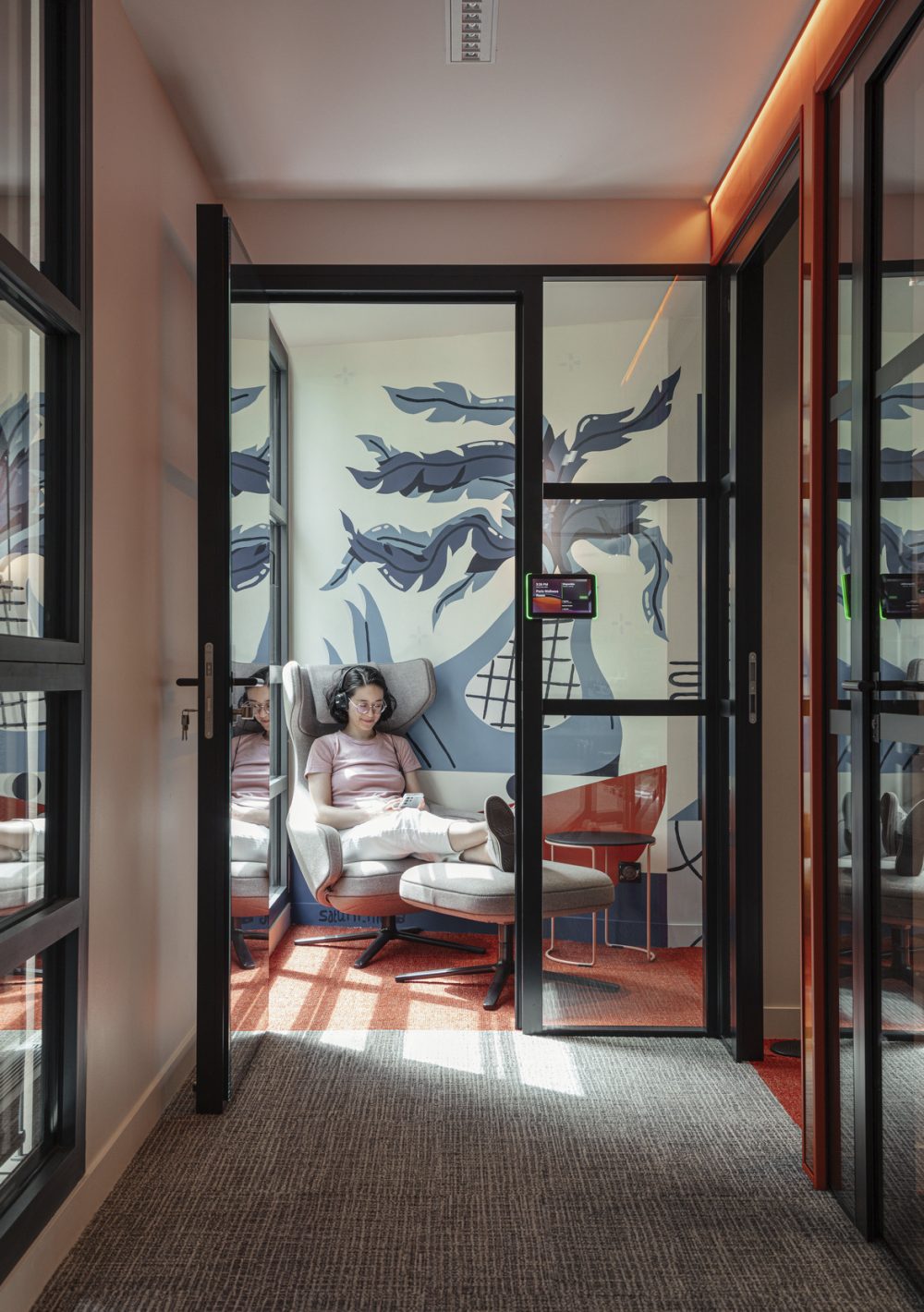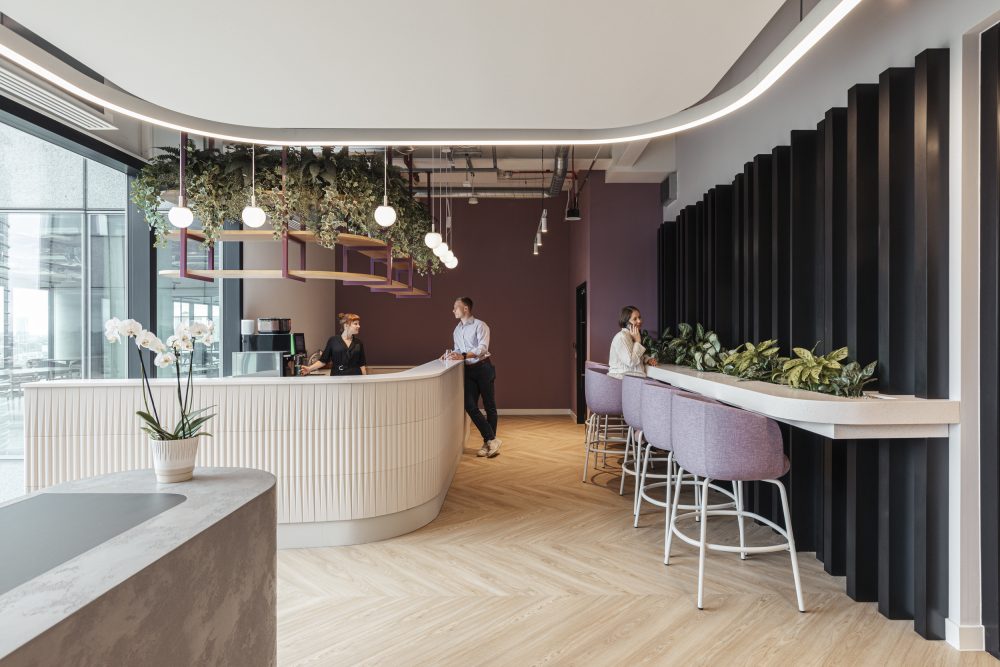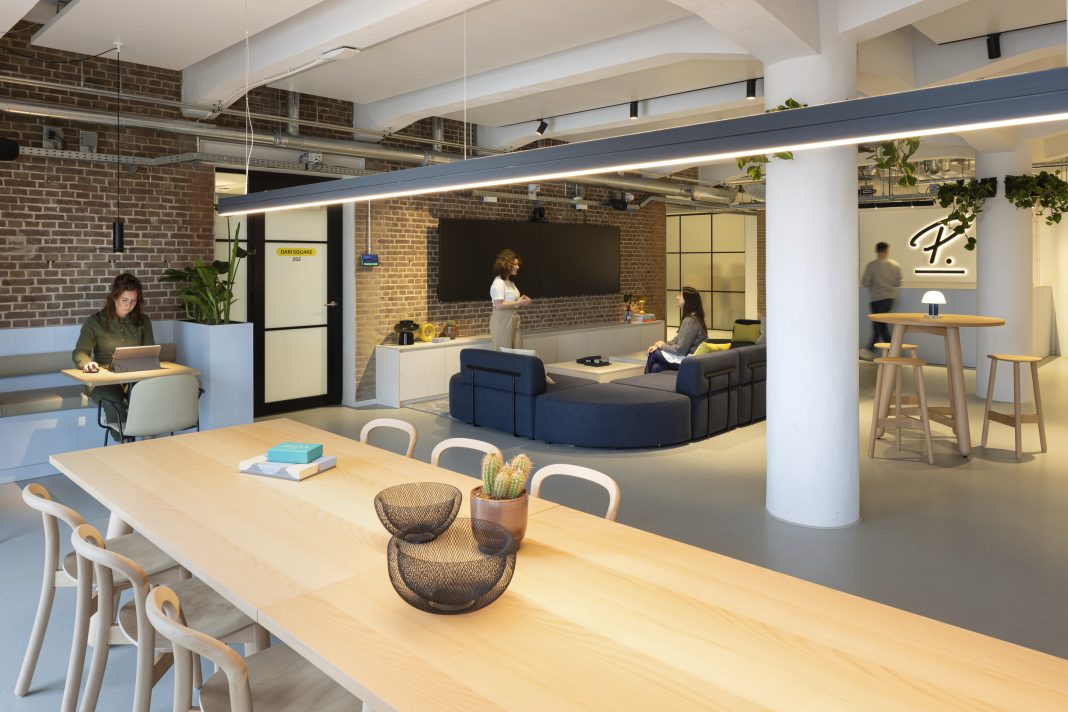M Moser’s Frances Gain, Senior Associate, Workplace Strategy and Transformation and Gurvinder Khurana, Director delve into three key elements of people-centric workspaces.
Embracing Neurodiversity
Over the last few years, there has been a growing interest in neurodiversity in the workplace. Increasingly, people and businesses are exploring what it means. This includes the emergence of a vocabulary around the topic and greater ease in accepting and celebrating people’s differences. In the same way that sustainability has moved from a checkbox exercise or a novel and unfamiliar concept, catering for neurodiversity is no longer about designating “special space” for ‘different’ people. In 2024, designing for neurodiversity will be about providing more choice offerings and different sensory environments. The future workplace will include a broader range of supportive options, redefining the experience for all.
But not everything can be solved through design alone. For the transformation of inclusive spaces to occur, there must be a union of four elements:
- Workplace culture: a culture that supports and celebrates difference.
- Physical design: a space that offers layers of choice, such as control of sensory stimuli and adjustable seating and lighting. Or even the option not to be in the physical workspace on any given day.
- Operational: details such as creating signage or a booking system for specific spaces to make the set-up more functional and efficient.
- Continuous testing: we need to continuously test, engage people and iterate to ensure spaces truly support neurodiverse needs.

The Importance of Sensory Design
Sensory design is going to be an increasingly important factor in the workplace. Both in terms of high-end, five-sensory design and through a deeper understanding of our sensory systems and how different people respond to sensory input. In the first instance, we’ve seen how the hospitality and retail sectors employ colour, music, signature scents, tactile elements and taste (such as the chocolate on the pillow) to enhance user experience, memory and brand loyalty. This approach has now found its way into the workplace. Dialling up sensory design (through curated smell, choreographed lighting design, sound masking or music) makes for a more attractive experience for employees and clients. In our projects, we are increasingly aware of the power of sensory design, and our clients are asking for more experience-driven workplaces that push beyond colour and branding.
In a deeper dive into sensory design and stimuli, we look to the medical professionals and their studies of our eight senses. These include visual, auditory, tactile, smell, taste, vestibular, proprioception and interoception. We look at how they work together differently in our sensory system to support different processing, behaviours and working methods. For example, the hypo-sensitive may seek greater stimulation, while the hyper-sensitive may need to avoid it.

Embracing Colour
The enduring influence of nostalgia on our colour choices is evident, with warm greys maintaining their status as a steadfast neutral in Europe. Vintage greens, rust and earth tones further contribute to a palette that emphasises security and sanctuary. Additionally, softer tones of blue, inspired by nature, will persist in colour selections. A subtle resurgence of white as a neutral is anticipated, offering a serene and tranquil ambiance.
On an emotional level, colours can create a range of reactions and stimulate our senses. As we navigate uncertain times, the deliberate selection of certain colours can support comfort and emotional wellbeing. Designing ‘refuge’ spaces that resonate with people, can help them feel grounded and secure amidst the turmoil of the external world.
Images courtesy of M Moser.


